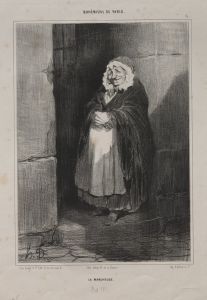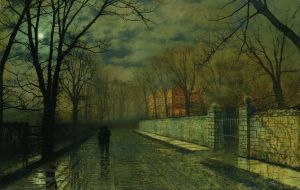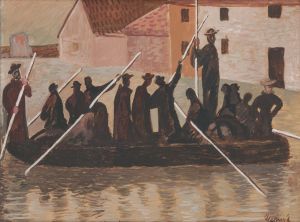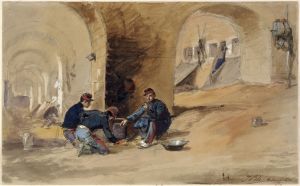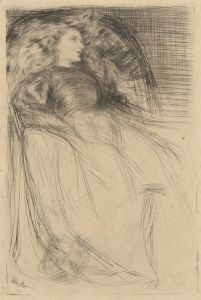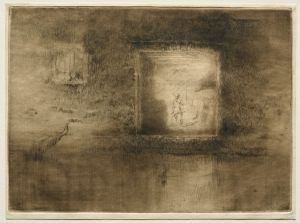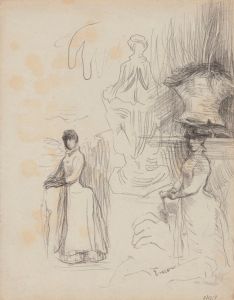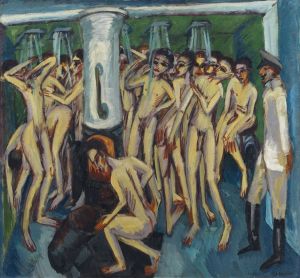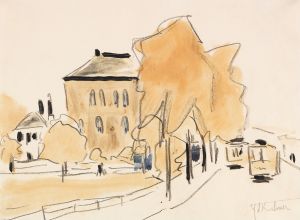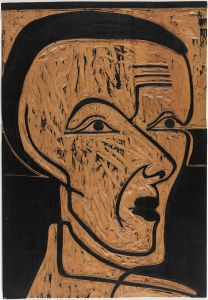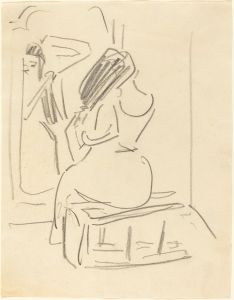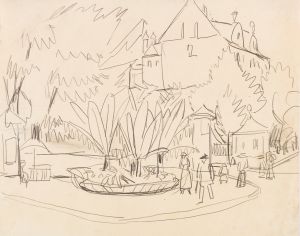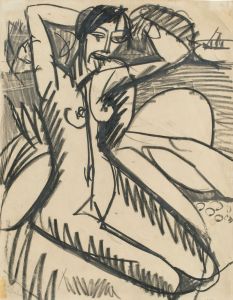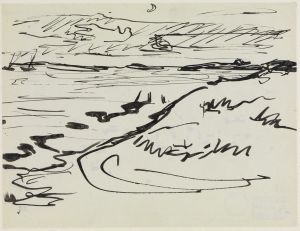
Dampferlände in the rain
A hand-painted replica of Ernst Ludwig Kirchner’s masterpiece Dampferlände in the rain, meticulously crafted by professional artists to capture the true essence of the original. Each piece is created with museum-quality canvas and rare mineral pigments, carefully painted by experienced artists with delicate brushstrokes and rich, layered colors to perfectly recreate the texture of the original artwork. Unlike machine-printed reproductions, this hand-painted version brings the painting to life, infused with the artist’s emotions and skill in every stroke. Whether for personal collection or home decoration, it instantly elevates the artistic atmosphere of any space.
Ernst Ludwig Kirchner was a prominent German expressionist painter and one of the founding members of the artist group Die Brücke, which played a pivotal role in the development of modern art in the early 20th century. Kirchner's work is characterized by its bold use of color, dynamic compositions, and a focus on the human figure and urban life. One of his notable works is "Dampferlände in the Rain," which reflects his distinctive style and thematic interests.
"Dampferlände in the Rain" is a painting that captures a scene at a steamship landing, likely in a cityscape setting, as suggested by the title. The term "Dampferlände" refers to a dock or landing area for steamships, indicating that the painting depicts a location where such vessels would arrive and depart. The inclusion of "in the Rain" in the title suggests that the scene is set during inclement weather, which may add a layer of atmosphere and mood to the work.
Kirchner's approach to painting often involved a vivid and expressive use of color, and it is likely that "Dampferlände in the Rain" features a similar palette. His works frequently convey a sense of movement and energy, capturing the hustle and bustle of urban life. The rain, as a natural element, might be used to enhance the dynamism of the scene, with reflections and wet surfaces adding to the visual interest.
Kirchner's style was heavily influenced by the Fauvist movement and the works of artists like Vincent van Gogh and Edvard Munch. His paintings often exhibit a sense of immediacy and emotional intensity, achieved through his use of bold brushstrokes and exaggerated forms. In "Dampferlände in the Rain," these stylistic elements would likely be present, contributing to the overall impact of the piece.
The context of Kirchner's work is also important to consider. As a member of Die Brücke, he was part of a movement that sought to break away from traditional artistic conventions and explore new ways of expressing the modern experience. The group's work was characterized by a focus on raw emotion and a desire to capture the essence of contemporary life. "Dampferlände in the Rain" can be seen as part of this broader artistic endeavor, reflecting Kirchner's interest in the interplay between people and their urban environments.
Kirchner's career was marked by both critical acclaim and personal struggles. He faced significant challenges during and after World War I, including health issues and the changing political climate in Germany. Despite these difficulties, his work continued to be influential, and he is now regarded as one of the leading figures of German expressionism.
In summary, "Dampferlände in the Rain" by Ernst Ludwig Kirchner is a work that exemplifies the artist's expressionist style and thematic focus on urban life. Through his use of color, composition, and subject matter, Kirchner captures the vibrancy and complexity of a steamship landing in the rain, offering viewers a glimpse into the dynamic world of early 20th-century cityscapes.





